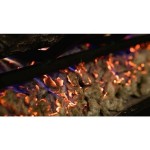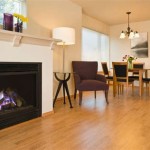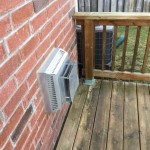How Many Fireplaces Are In The White House?
The White House, the official residence and principal workplace of the President of the United States, is steeped in history and tradition. Its iconic facade and meticulously maintained rooms are familiar to people around the globe. Beyond its symbolic importance, the White House also serves as a home, requiring comfortable and functional spaces for the First Family and their guests. One element contributing to the warmth and ambiance of this historic building is its fireplaces. Determining the exact number of fireplaces within the White House, however, requires a closer examination of its architectural records and historical renovations.
The White House boasts a significant number of fireplaces. The exact figure can fluctuate slightly depending on how one defines "fireplace" (functioning, decorative, or previously existing but now closed off). However, the most widely accepted and consistently cited number is that the White House contains a total of 28 fireplaces. These fireplaces are distributed throughout the building, serving various purposes and complementing the architectural styles of different rooms.
Distribution of Fireplaces Across Different Rooms
The 28 fireplaces are not concentrated in a single area of the White House, but rather thoughtfully placed in key rooms to provide both functional heating and aesthetic appeal. Many of the fireplaces are located within the private residences of the First Family, providing warmth and a sense of domesticity. The State Dining Room, used for formal dinners and gatherings, also includes fireplaces, contributing to the room's grand and impressive atmosphere. The fireplaces in the East Room, the largest room in the White House, are primarily decorative, adding to the room's elegance and historical character. The Oval Office, a space of immense historical significance and the President's primary workspace, also contains a fireplace, offering a degree of comfort and visual appeal. Additionally, fireplaces are found in various guest suites, reception rooms, and other areas throughout the White House, catering to the needs of occupants and visitors alike.
The presence of fireplaces reflects the historical context of the White House, particularly during its early years when fireplaces were a primary source of heat. As the building was expanded and modernized, central heating systems were introduced, but the fireplaces were retained, often becoming decorative features that added to the architectural charm of the rooms. The materials used in the construction and ornamentation of the fireplaces vary depending on the specific room and its historical period. Some fireplaces are crafted from marble, while others are constructed from brick or stone. The mantels and surrounding details are often adorned with intricate carvings, moldings, and other decorative elements, reflecting the stylistic preferences of different eras.
Historical Significance and Evolution of Fireplaces
The fireplaces in the White House have witnessed countless historical events and played a subtle but significant role in the daily life of the nation's leaders. From informal gatherings of presidents and their families to diplomatic meetings and important policy discussions, these fireplaces have been silent observers of American history. Over the years, some fireplaces have been modified or restored as part of larger renovation projects. Changes in technology, safety standards, and aesthetic preferences have influenced the design and functionality of the fireplaces. For example, some fireplaces have been converted to use gas rather than wood, while others have been carefully restored to their original appearance based on historical records and architectural analyses.
Throughout the history of the White House, different First Families have likely used and appreciated the fireplaces in various ways. Some families may have enjoyed gathering around the fireplace for warmth and conversation, while others may have utilized the fireplaces primarily as decorative features. The fireplaces, regardless of their specific use, contribute to the overall character and atmosphere of the White House, creating a sense of history, tradition, and domesticity within this iconic building.
The Maintenance and Preservation of Fireplaces
Maintaining and preserving the fireplaces in the White House requires ongoing effort and expertise. Given their age and historical significance, these fireplaces must be carefully inspected, cleaned, and repaired to ensure their continued functionality and aesthetic appeal. Specialists in historic preservation and architectural restoration are often involved in these efforts, employing techniques and materials that are appropriate for the age and style of the fireplaces. Routine maintenance tasks include cleaning the chimneys, inspecting the fireboxes, and repairing any cracks or damage to the surrounding materials. More extensive restoration projects may involve replacing damaged components, refinishing surfaces, and restoring decorative details to their original condition. The maintenance and preservation of the fireplaces are essential for ensuring that these historical features continue to enhance the beauty and character of the White House for generations to come. The White House Historical Association plays a key role in documenting and preserving the historical artifacts and architectural elements of the building, including the fireplaces.
The importance of these fireplaces extends beyond their practical function or aesthetic appeal. They are tangible links to the past, connecting the present occupants of the White House with the generations who have come before. Each fireplace tells a story, representing a specific era in the building's history and reflecting the tastes and preferences of the individuals who lived and worked there. By preserving these fireplaces, the White House ensures that these stories continue to be told, offering visitors and future generations a glimpse into the rich history and enduring legacy of the American presidency.
In conclusion, the 28 fireplaces of the White House are not merely functional or decorative elements; they are integral parts of the building's history and character. Their presence throughout the rooms of the White House reflects the evolution of the building over time and offers a glimpse into the lives of the presidents and their families who have called it home. The ongoing maintenance and preservation of these fireplaces ensure that their historical significance will continue to be appreciated for years to come.

9 Facts You Might Not Know About The White House Fireplaces

Presidents Day Fireplace Facts Old World Stoneworks

9 Facts You Might Not Know About The White House Fireplaces

9 Facts You Might Not Know About The White House Fireplaces

Two Famous Fireplaces The White House And Number 10 Antique Surrounds Thornhill Galleries

9 Facts You Might Not Know About The White House Fireplaces
Do Any Of The White House Fireplaces Still Work And Are They Ever Used Quora

This Color Photograph Depicts The Fireplace And Mantel In Green Room Of White House On Display Center Interior Rooms

Fireplaces For Government By Stromberg Architectural S

163 Oval Office Fireplace Picryl Public Domain Media Search Engine
Related Posts








